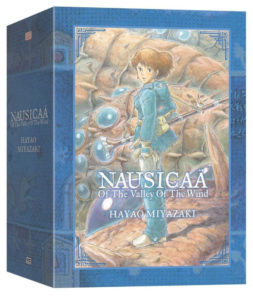
Nausicaä of the Valley of the Wind
Written and Illustrated by Hayao Miyazaki
Translated by Dana Lewis, Toren Smith, and Rachel Thorn
Lettered by Walden Wong
Published by Viz Media
Before the movie, before the Studio, Hayao Miyazaki was making a manga about a princess on a poisoned planet. An epic story of two kingdoms finally falling at each other’s throats while the land around them spoils. A work of rare length from the modern master, stuffed with passion and ideas. Giants, bugs, and giant bugs. Psychics, wanderers, cavalry, ghosts, priests, and children. Flight, fate, Nausicaä of the Valley of the Wind.
The war begins at home. Nausicaä: princess and heir, capable with a glider, contemplative regarding her toxic world, bound to honor her small kingdom’s allegiance to one side of a war. The matriarch of a family of vipers on one side, religious zealots led by a dark wizard and his watch-the-world-burn brother on the other. Nausicaä rises as a folk hero, the accidental leader of an army of outcasts- others who are caught between the sides and the blight.
Miyazaki’s ceramic age of knights and airships totter at the brink of their era’s collapse. Overgrowing these last castles are giant forests of poison spores, protected by mammoth beetles who spread the plague when drawn to their borders. Nature’s reset to continental tabula rasa has ended the age of man. One power experiments with using this environmental destruction to wipe out the other, the other strikes back with the lost technology of annihilation behind the scourging of the planet. The drama of flashing sword showdowns are executed with Seven Samurai perfection and then criticized for their ego.
The translation by Dana Lewis, Toren Smith, and Rachel Thorn was handled beautifully. The dialog feels crisp, the myriad allegiances and double crosses are clear. It is on the alien high fantasy side of things, but personalities come through and you connect with everyone as intimately as they do each other. The lettering choices from Walden Wong are also clear and professional with a touch of Renaissance flair that is shared with the general aesthetic.
The sound effects are left untouched. It’s great to see Miyazaki’s letters, especially the creative drama and visual language of effects. Most pages have nine to fifteen panels and never in a grid. An avalanche of characters, things said, actions, visions, moments. A journey of a million miles to cover in seven slim volumes but Miyazaki and the Viz Media Studio Ghibli Library team makes it fit.
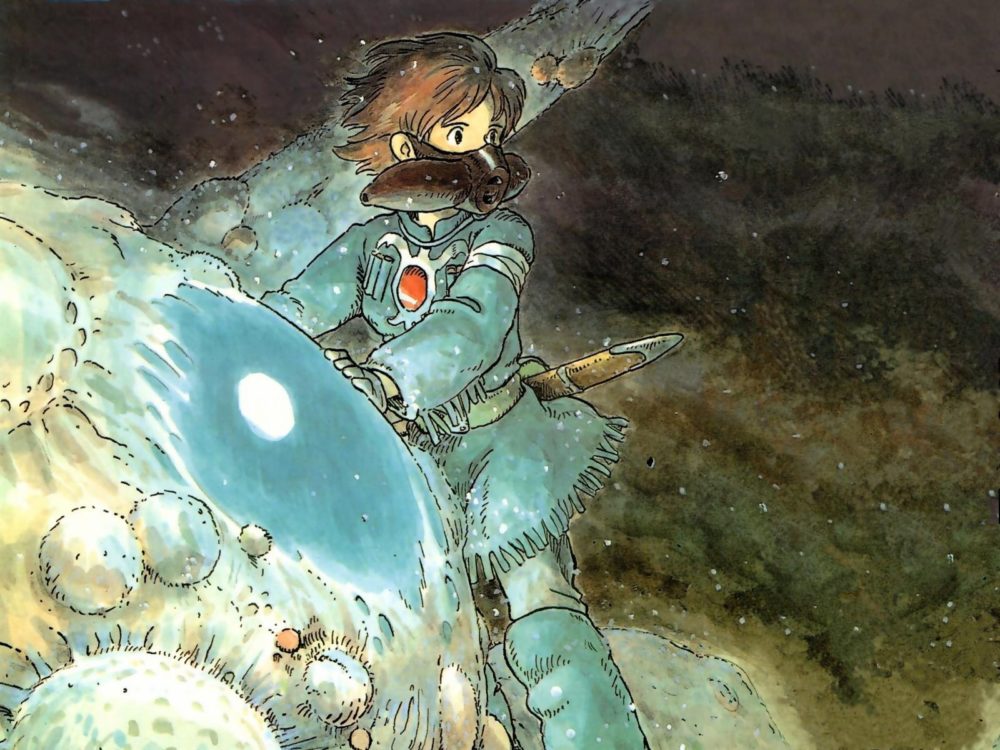
That slow roll to crescendo means scads of characters added to the story in waves. Think of The Wire and its ingenious, Shakespearean character combinations. Multiple factions on both sides, not to mention the cataclysmic changes being made to the natural world, means allegiances shift. Nausicaä is the joy of unlikely couples. A book of many villains, mostly villains, given time to face the repercussions of their actions.
Miyazaki’s simple and clear designs for both characters and settings flexes with enough detail to ensure an individual spirit but never so much that the cartoony aesthetic becomes overwhelmed with linework. Details can ebb and flow from his style, but the look doesn’t change. There’s a wiggle in the line art that comes from speed, the hand chasing the ideas. Big body language, huge moments of loss and sorrow captured in pose and reflected in glassy eyes and delicate faces.
Nausicaä is underground cities buried in roots of petrified forest all the way up to a dirigible carrying a self-growing radioactive laser giant in a birth sac and every imaginable thing between. All over is Miyazaki’s fixation with flight. A dogfight through a snowstorm of spores, aircraft size insects flying in platoons, “flying jars” part nimbus cloud part Baba Yaga. Bugs rule the skies and the planes take after them, just as the costumes reflect who runs the world. Knights in shining carapace, masked, armor is a poison planet’s human exoskeleton.
As the story progresses, Nausicaä encounters a more dreamlike world. Her power grows and her rivals rise to meet her magic. The worsening chemical warfare means masks, gloves, layers, humans who don’t look like people anymore. As Nausicaä goes from fighting infantry to the emperor and his squad of eldritch cactus behemoths, Nausicaä trades a soldier’s view of warfare for struggle immaterial. The pivot to exploration of self and the definition of evil suits the story’s heart.
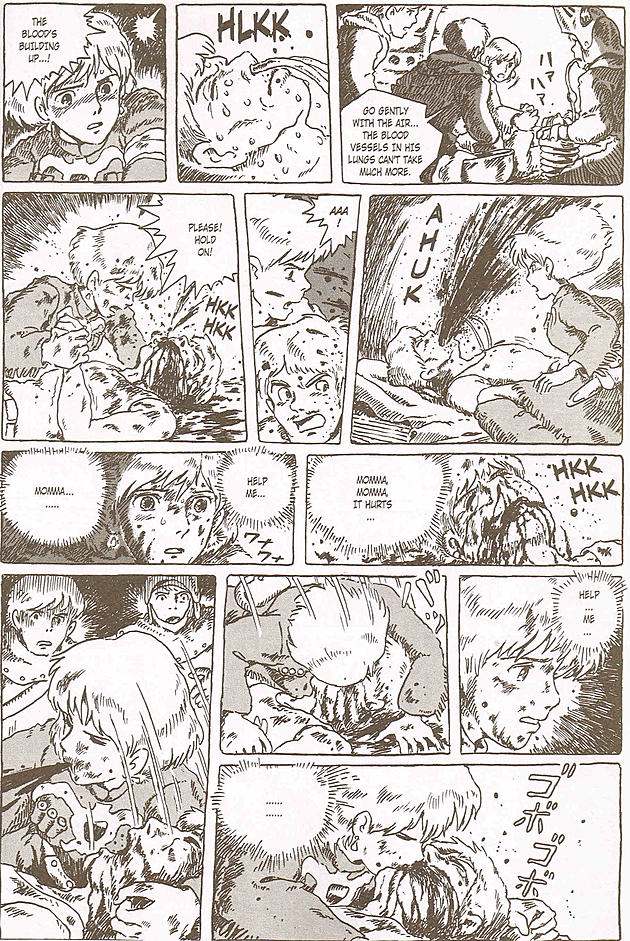
Nausicaä is Miyazaki when his style was still Topcraft. The aesthetic hits with more detail than its retro peers like Toei, but stays classic round not modern angular. Really, the crosshatch texture Miyazaki brings has that European Dungeons & Dragons feel, Hobbit leftovers. His modern works are the epitome of smooth; here we have the demo tape, something intimate and visibly worked.
As a nerd for Studio Ghibli’s films, it fascinates me how the Nausicaä manga fits into Miyazaki’s life as a storyteller. I realized as I was reading this that every movie of his I had ever seen was a short story. Nausicaä is a novel, and Miyazaki is as great a storyteller in long form as he is an animator. It was the other thing he was doing while he, Isao Takahata, and Toshio Suzuki built Ghibli. The whole first era, with Princess Monoke right on the heels of the manga’s conclusion as a tight summation of what mattered to him most as a creator. A powerful princess with justified anger issues and the power of a supernatural natural world pitted against a matriarch loyal to infrastructure just scratches the surface. Unmasked contempt for those who prosper during wartime.
Miyazaki isn’t writing to tell battle stories. Nausicaä contemplates why the planet is allowing itself to be ruined, the perseverance of life, and our place within both of those topics. Nature endures and we are a part of that. Our perseverance is stronger than natural collapse and power-crazed despots. We are worth saving. Nausicaä is the story of an empowered woman struggling to make her vision of peace real in a world of poison men. Nausicaä’s ascension isn’t caused by the huge events in her world, she is causing them.


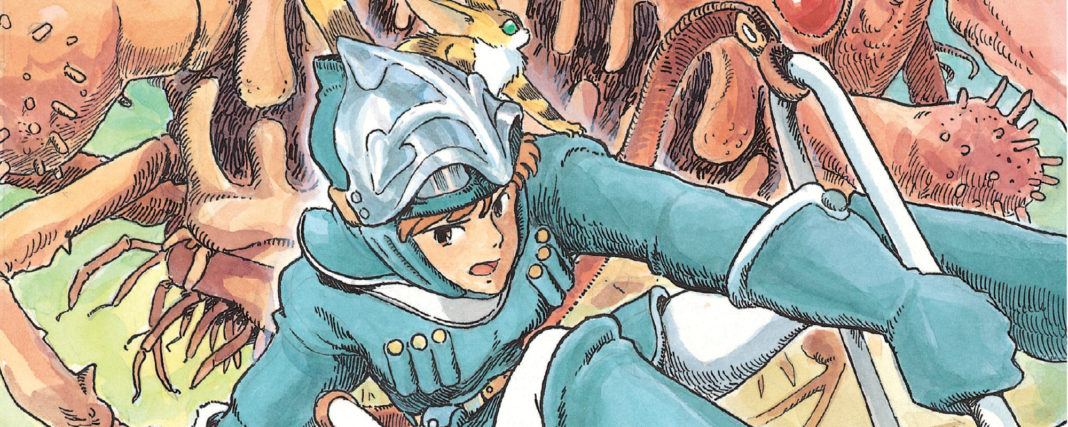


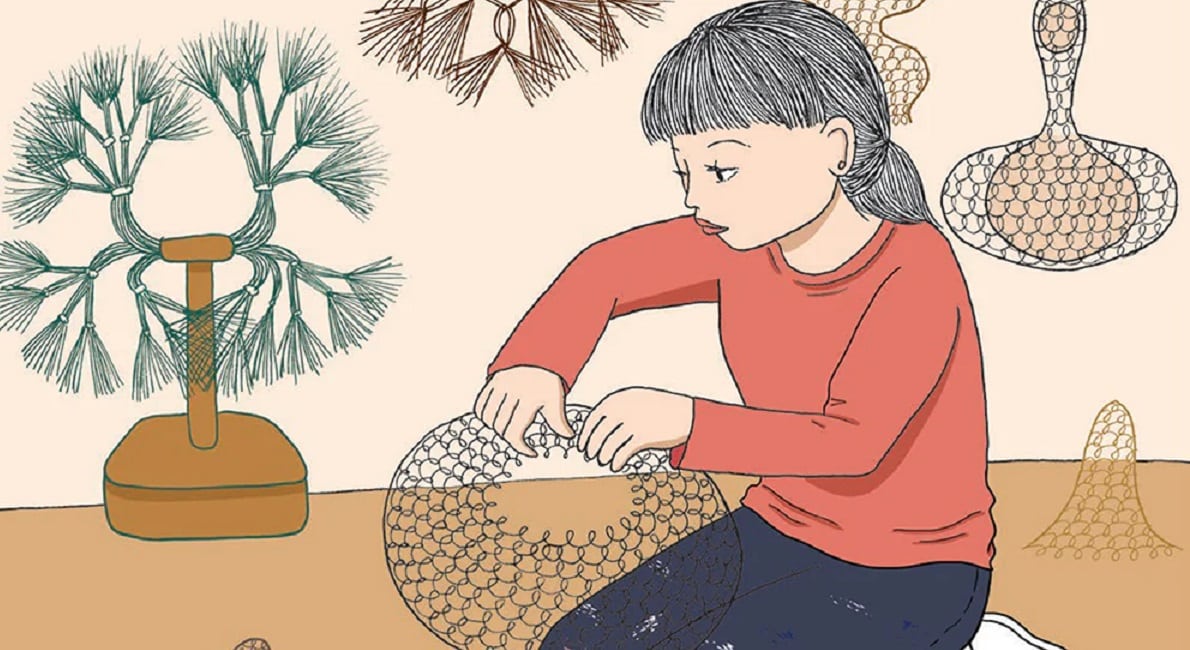



I’m a big comic fan whom had never read Nausicaä, my girlfriend (now wife) wasnt a big comic fan but loved Studio Ghibli, so I bought her the big box set with the intention of reading it after.
I may one day read it, but she didnt get past the the halfway point of the first volume.
“There’s a completely pointless battle scene every 15 pages, why did you think I’d like this?”.
I’d still love to see what Miyazaki might do if he had the chance to adapt ‘The Hobbit’ as an anime or manga.
I believe that one of the translators’ names is Rachel “Matt” Thorn. You can probably check with her on Twitter if you want to confirm which she’d prefer in your review.
We’ve corrected the copy to reflect the accurate names of both Rachel Thorn and Dana Lewis. My apologies for not doing sufficient research into the creative team on this one.
Comments are closed.